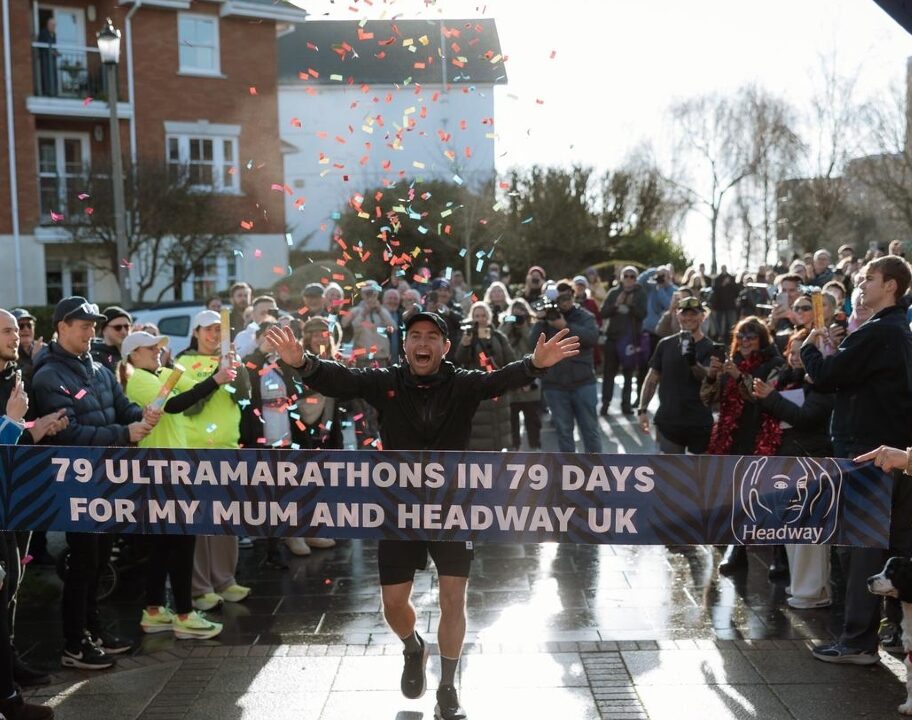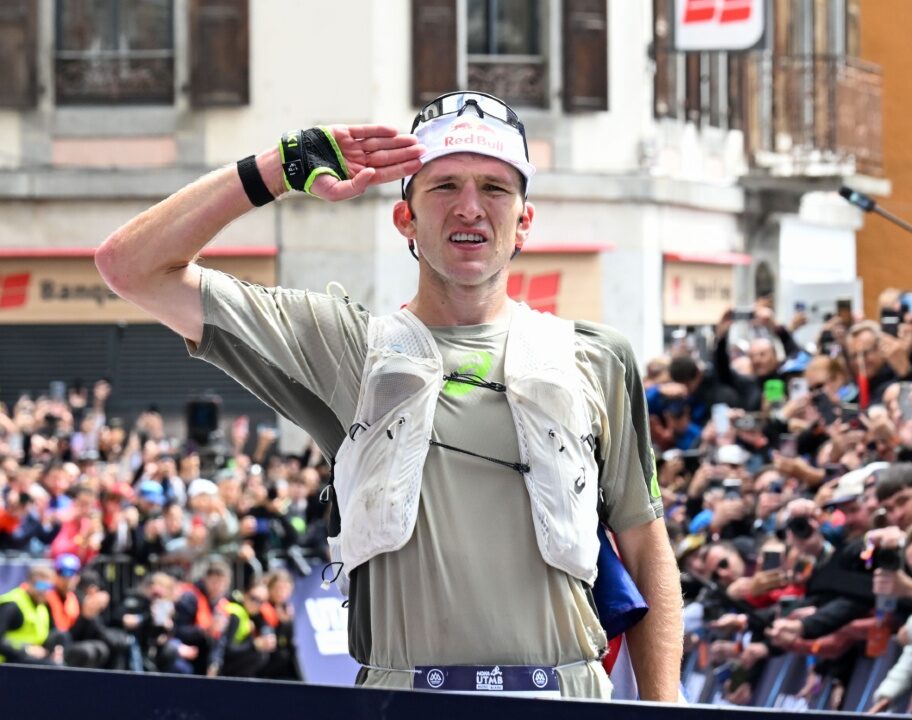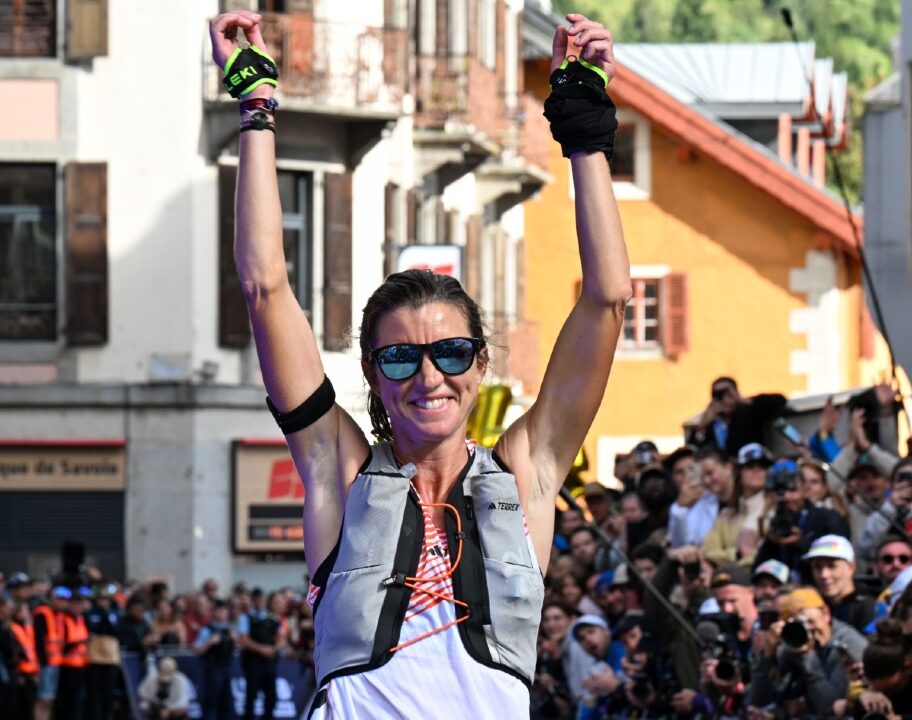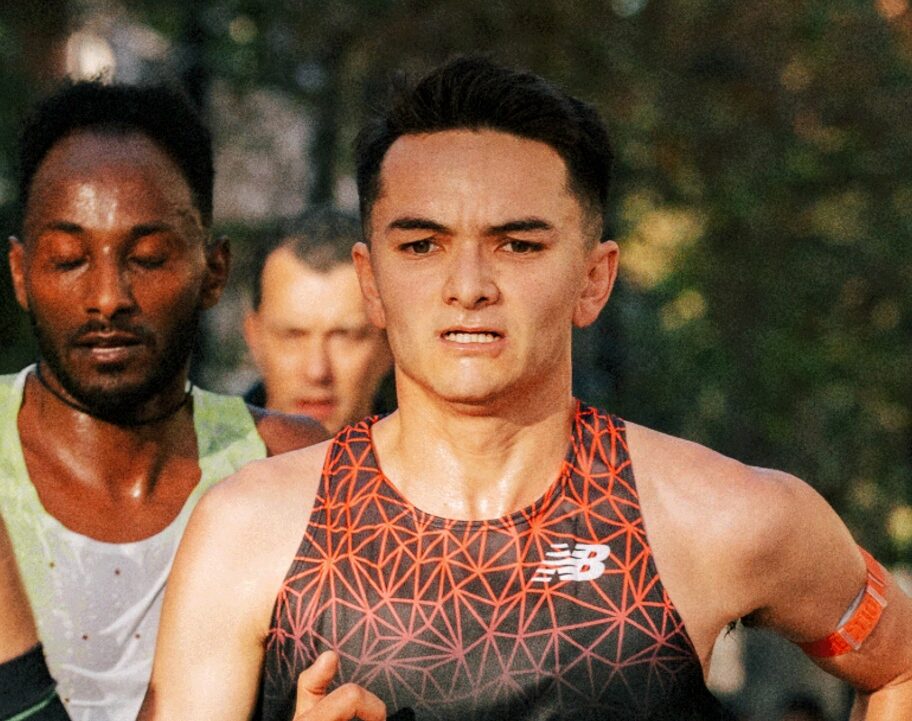Super shoes have surged in popularity, helping everyone from world-class elites to recreational runners level up their personal best times. And while your running shoes aren’t going to do the hard work for you – you’re still going to have train smart and race hard. Your choice of race day shoe can give you that extra 1% (or perhaps that should be 4%, according to Nike) to help you get the very best out of yourself.
The OG Nike Vaporfly 4% really started the super shoe party. And the industry responded to that appetite for ultra-bouncy, pace enhancing running shoes. Demand grew, but so did the stack heights as brands pushed the boundaries with new foam technologies and the integration of multiple carbon plates. But like any good party, the fun had to stop at some point. And in 2020, World Athletics banned shoes with a stack height over 40mm, and/or with more than one rigid embedded plate/blade from road-race competition.
Now let’s face it, most mass participation marathons aren’t going to have officials on the start line with a ruler checking out every single one of the tens of thousands starters’ shoe height. But technically, where races are operating under World Athletics rules – a >40mm stack height shoe is ‘illegal’. With that in mind, I’m bringing you my pick of the best marathon shoes for race day, from the premium super shoes to the slightly more budget friendly options out there.
Nike Vaporfly 3
| Stack height: 40mm | Drop: 8mm |
| Weight: 200g (men’s) / 165g (women’s) | RRP: £249.99 / $325 |
| Key features: Improved stability, ZoomX foam, additional comfort features added | Best for: Heel strikers |
Of course, I’ve got to start with the latest iteration of the ‘OG super shoe’ which, when it launched in 2017, claimed to offer a 4% improvement in running economy. The latest version, the Vaporfly 3 is right on the boundary of being race-legal with it’s 40mm stack height. But I’ve double checked the World Athletics running shoe equivalent of Santa’s naughty and nice list, and they are approved for competition.
My marathon running, so far, has all happened at the end of an Ironman triathlon. Though once I’ve ticked off Kona later this year, I have a feeling some standalone marathons will be in my future! I raced two full Ironman distances in my Vaporfly 3s last season. And while I’m by no means a fast runner – they did help me to run a 3:56 marathon split after spending 112 miles on the bike grinding against a brutal head wind. I’ve run in older versions of these over the years and the Vaporfly 3s offer a bit more room in the toe box than previous iterations. There’s less lace pressure on the top of your foot in the latest version. And the stability under foot also feels better. I wore them for a half marathon on mixed terrain (road, gravel, trail) recently and I was pleasantly surprised with the traction.
Of course there is also the Nike Alphaflys. I did get a pair of these a few years back but immediately exchanged them for trusty Vaporflys. For me, the Alphas just felt way too unstable.
ON Cloudboom Strike
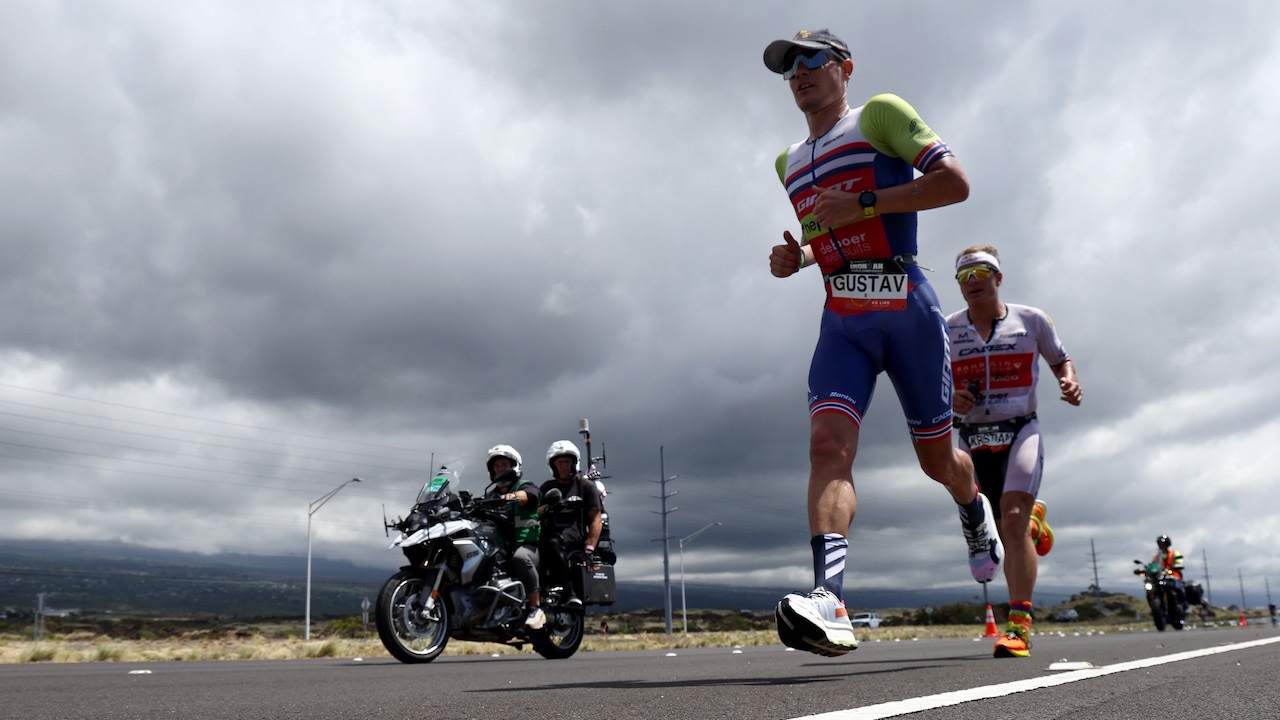
| Stack height: 39.5mm | Drop: 4mm |
| Weight: 219g (men’s), 194g (women’s) | RRP: £260 / $337 |
| Key features: Carbon Speedboard®, max cushioning | Best for: Forefoot runners |
ON feel like the brand that all the cool kids are wearing right now. Sadly, the 4mm drop height of the ON Cloudboom Strike doesn’t work for me. But if you get on well with a lower drop shoe, this is certainly a shoe worth considering. Promising an ultra-cushioned ride combined with ON’s signature Helion™ HF hyper foam for energy return and a ‘spoon-shaped’ carbon fibre Speedboard® to give strong energy transfer and propulsion at toe off. Plus a super lightweight upper and a super stylish design.
ASICS Metaspeed Sky and Metaspeed Edge Paris

| Stack height: 39.5mm | Drop: 5mm |
| Weight: 185g | RRP: £220 / $285 |
| Key features: Lightweight, versions for different run styles | Best for: Mid to forefoot runners |
ASICS’ Superblast and Novablast shoes might have found themselves on the stack height naughty list. But the Metaspeed Paris series shoes are still very much race legal. The ‘Sky’ is aimed at stride runners, to give max propulsion per stride. And the Edge is targeted at cadence runners, focusing on fast take off. Both shoes feature a curved design to minimise energy lost during excess ankle flexion. And the latest versions have a wider carbon plate for even more spring in your step.
Saucony Endorphin Elite
| Stack height: 39.5mm | Drop: 8mm |
| Weight: 204g (men’s) / 185g (women’s) | RRP: £280 / $365 |
| Key features: Slotted carbon plate, ultra-breathable | Best for: Most types of foot strike |
I spent a season racing in the Saucony Endorphin Pro super shoes. Which I liked, but I didn’t love them enough to replace them like for like when they wore out – returning to the Nike Vaporfly. They performed well enough, but they just didn’t quite have the same snap and energy return as the Nikes. But the Endorphin Elite addresses that issue, with an improved slotted carbon plate levelling up the energy return and offering more responsiveness compared to the Endorphin Pro. You’ve also got a roomier toe box and wider mid-foot. This helps to improve lateral stability, which combined with the Pebax-based PWRRUN HG foam makes for a firmer feeling ride.
New Balance FuelCell SuperComp Elite V4
| Stack height: 40mm | Drop: 4mm |
| Weight: 241g (men’s) / 179g (women’s) | RRP: £260 / $337 |
| Key features: Thin full carbon plate, lightweight upper | Best for: Forefoot runners |
The 2023 New Balance Supercomp had a stack height greater than 40mm. But the most recent version, the SuperComp Elite V4 has a just-about-legal stack of 40mm, and World Athletics list them as approved for use. I actually think the reduced stack will have made these shoes better, too. I ran in the old >40mm 2023 iteration for several months and while I enjoyed all that squishiness underfoot (I was returning from a small stress fracture at the time) they definitely didn’t feel at all energetic.
The SuperComp Elite V4s boast a full carbon plate, a lightweight design with strategic cut-outs to maximise energy return. And that parred back stack height should take away the marshmallow factor..
Hoka Cielo X1 2.0
| Stack height: 39mm | Drop: 7mm |
| Weight: 228g | RRP: £250 / $325 |
| Key features: Updated rocker, improved outsole traction | Best for: Most types of foot strike |
And finally, before we move on to a few options that won’t do quite so much damage to your bank balance. Is the Hoka Cielo X1 2.0. These Hoka running shoes come with their most racey rocker shape, combined with PEBA foam and a winged carbon plate. All designed to offer even more speed than the much-loved Rocket X2. Hoka have also improved the traction on the outsole of the Cielo X1 2.0s. The compromise for that extra pep in your step is stability. If you get on well with Hokas but you want something with a little more lateral stability, you might prefer the Rocket X2.
Best marathon running shoes without the super high end price tag
It can be hard to justify spending close to £300 / $350 (in some cases) on one pair of running shoes. Especially when some of those super shoes favour performance over durability. Meaning you’ll have to replace them regularly if you race fairly often. Thankfully, there are some (relatively speaking) more affordable options out there that will still give you a boost of extra run speed. I’m not going to go as far as calling these budget-friendly. We’ll go with budget-friendlier.
Adidas Adizero Boston 12s
| Stack height: 38mm | Drop: 7mm |
| Weight: 260g | RRP: £140 / $180 |
| Key features: Carbon rods, customisable | Best for: Most types of foot strike |
The uber-chunky Adidas Prime series shoes are all on the banned list. But that doesn’t leave Adidas high and dry on the super shoes front. If you’re a big fan of the three stripes, you’ll be glad to know that there are a couple of super shoes options from Adidas that are race-legal. Of course, you have the Adizero Pro 4 running shoes at the more premium price point (~£220). But for an £80 saving with an RRP of £140, the Adidas Adizero Boston 12s are a great alternative option for amateur runners who aren’t so worried about getting every ounce of performance – but do want some extra pep in their step.
The Adidas Adizero Boston 12s feature carbon rods, rather than a plate, and offer up plenty of energy return. But there’s less of a compromise on durability compared to other super shoes. That means you can do a couple of your longer training runs in them to make sure you’re happy before race day, without worrying about wearing them out. You might even get more than one race season out of them! For a small extra cost, you can also add custom text to your shoes. It won’t make you run faster, but it is kind of cool.
361 Degrees Flame 4
| Stack height: 36mm | Drop: 6mm |
| Weight: 210g | RRP: £146 / $190 |
| Key features: Carbon plate, high energy return midsole | Best for: Mid-fore foot runners |
The Flame 4 running shoes from 361 Degrees are a carbon plated running shoe at a pretty wallet-friendly price point. The “Qu!kBONE DYNAM!C” (yes, I am docking them some imaginary points here for the annoying use of unnecessary exclamation points) carbon plate has been designed with cut-outs for optimal propulsion. And the “Qu!kFLAMECQT” mid-sole promises bounce and energy savings, without adding too much additional weight to the shoe. The upgraded outsole offers improved grip and durability. And the upper is now made from ‘Carbon Silk’ which promises better breathability.
New Balance FuelCell Rebel 4
| Stack height: 30mm | Drop: 6mm |
| Weight: 211g (men’s) / 157.5g (women’s) | RRP: £140 / $180 |
| Key features: FuelCell responsive foam, versatile all-rounder | Best for: Mid-fore foot runners |
Pitched as an ‘everyday trainer’ with an extra boost of energy return that offers versatility across long steady runs and high tempo efforts. The New Balance FuelCell Rebel 4 is an ideal choice if you’re not set on a carbon plate, and you want a solid all-rounder to take you from training to race day. The Rebel 4 is designed to feel propulsive and responsive underfoot, thanks to a blended PEBA/EVA foam. While still offering the cushioning, stability and durability you’ll need to tick off all the long training runs. The slightly lower 30mm stack height will give you more ground feel compared to other shoes on this list. Ideal if you don’t get on with towering, max cushioning. And the look and feel of the design still gives off a ‘race day vibe’, so you certainly won’t feel like you’re plodding around in your training shoes.
Hoka Mach X
| Stack height: 37mm | Drop: 5mm |
| Weight: | RRP: £170 / $220 |
| Key features: | Best for: Mid and forefoot runners |
The Hoka Mach X is pushing the limit of ‘budget-friendly’. But considering you’re saving between £80-£100 compared to the super shoe options – you’re still getting a decent amount of performance for the price tag. The Mach X has a Pebax® plate instead of carbon, which still gives good propulsion. This is tucked between PEBA and EVA foam, which provides cushioning without compromise on rebound. The rocker is more aggressive, adding to the propulsive feel. This, combined with the slimmed down design and lightweight construction, makes the Mach X a shoe that could quite easily take you from training to race day.
Quick fire recap/FAQs
Quite simply, the amount of material between your foot and the ground – how ‘tall’ the sole of the running shoe is.
40mm is the maximum, though many shoe brands have opted for 39.5mm presumably just to be on the safe side!
PEBA is a specific type of foam used in high performance running shoes. It is designed to be ultra-lightweight, responsive and with high energy return. ‘Every day’ running shoes often use EVA foam instead, where cushioning and stability is more of a priority than energy return and low density. Some mid-range shoes combine the two to offer the best of both worlds.
The drop of a running shoe refers to the difference in height between the heel of the shoe and the forefoot of the shoe. Take a look at our running shoe terms explained article to learn more!
A carbon plate in running shoes acts like a spring, maximising energy return when your foot hits the ground and adding propulsion. It also increases the shoe stiffness which helps to reduce energy loss.
Take a look at the World Athletics list of approved shoes.

